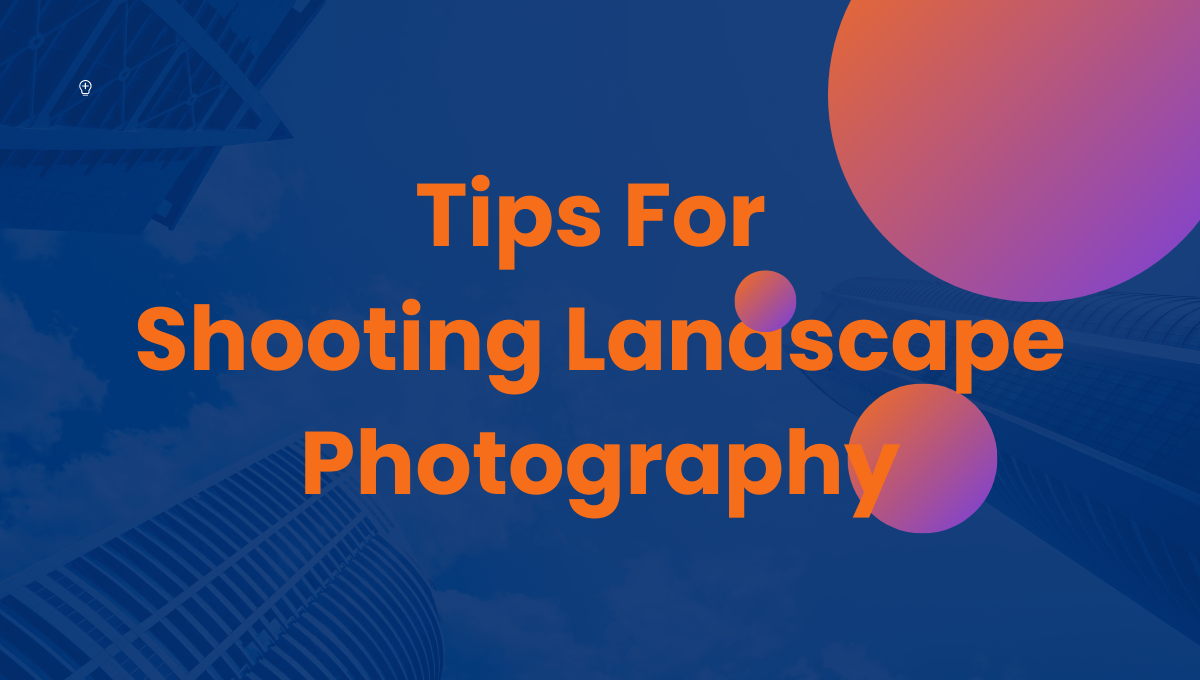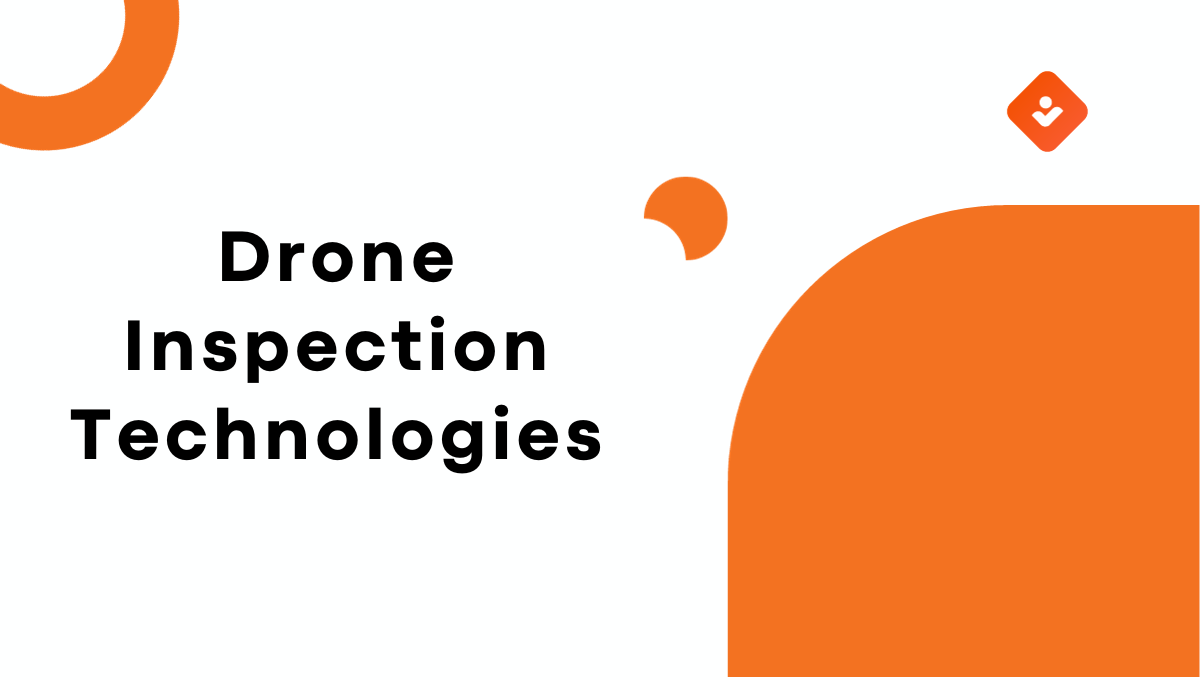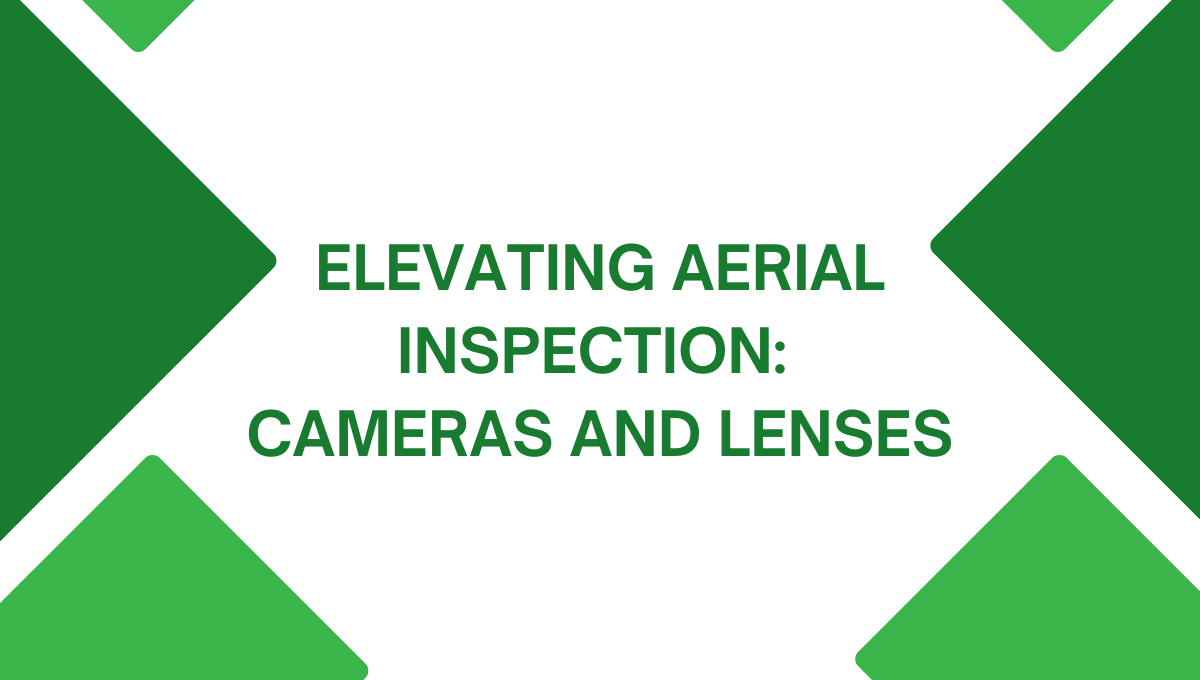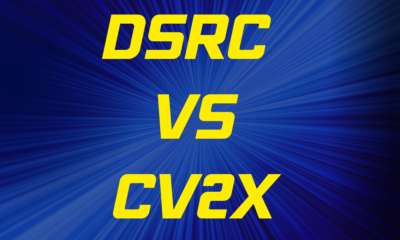Photography
Tips for Shooting Landscape Photography
Are you planning to take your landscape photography skills to the next level? One of the most crucial factors for capturing stunning images is using the right camera for the job. In this article, we’ll provide tips on choosing the best camera for landscape photography.
Published
2 years agoon
By
AdvaDo you ever admire breathtaking landscape photography and wonder how the photographer captured such beauty? Landscape photography is a discipline that demands time, tenacity, and talent. Although it might seem tough at first, with a few pointers and tactics, you, too, can take gorgeous landscape shots.
Landscape photography is the capture of the natural landscape, such as mountains, woods, rivers, and other outdoor settings. Landscape photographers typically use wide-angle lenses to capture the vastness of the scene, and they often shoot during the golden hour (the first and last hours of sunlight during the day) to capture the beautiful light.
An essential tip for landscape photography is to make sure you choose the right camera. Not all cameras are created equal; some are better suited for landscape photography than others. Consider these factors when selecting a camera for landscape photography:
-Sensor size: A larger sensor will allow you to capture more detail in your photos.
-Aperture: Look for a camera with a wide aperture so you can let in more light and capture sharper images.
-ISO: Increasing the ISO allows you to photograph in low-light situations without affecting image quality.
-Image stabilization: This feature will help reduce blurriness caused by camera shake.
A good landscape camera should have a high resolution, wide-angle lens, and good low-light performance. With high resolution, you can capture more details in your photos. A wide-angle lens will help you to obtain a larger field of view, which is helpful for landscape photography. Good low-light performance will let you take photos in low-light conditions without using a flash.

Tips for Taking Landscape Photographs
When shooting landscape photography, there are several things you can do to help ensure you capture the best possible image. The following are a few tips to remember:
- Use a tripod: This will help keep your camera steady and prevent any blurriness in your photos.
- Set your camera to a low ISO: A higher ISO can result in grainy images, so setting it low will help you avoid this issue.
- Shoot in RAW format: This will give you the most flexibility when editing your photos later.
- Use a wide-angle lens: This lens is ideal for landscape photography as it lets you capture much of the scene in one frame.
- Use natural frames: Look for elements like trees or mountains that can serve as natural frames for your photo.
- Pay attention to the light: Light quality can significantly impact your photos, so try to shoot during golden hour or another time when the light is particularly beautiful.
- Take multiple shots: It’s always a good idea to take more than one photo of the same scene so that you can choose from later on.
Mastering Camera Settings
Mastering your camera settings is one of the most critical things you can do while shooting landscape photography. This means knowing how to adjust your shutter speed, aperture, and ISO to get desired results.
Shutter speed is critical for two reasons: first, it determines how long your camera will be exposed to the light, and second, it affects how much movement will be captured in your photo. A slow shutter speed will result in a longer exposure time and a higher chance of blurring, so finding the right balance for your shot is important.
Aperture controls the amount of light that enters your camera and affects the depth of field in your photo. A small aperture (larger number) will result in a shallow field depth, meaning that only objects in the foreground will be in focus. A large aperture (smaller number) will result in a deep field depth, meaning that foreground and background objects will be in focus.
ISO controls the sensitivity of your camera sensor to light. A high ISO setting will make your sensor more sensitive, meaning less light is needed to produce a well-exposed image. However, using a high ISO setting also comes with the risk of introducing noise into your photo.
To get started, try experimenting with different combinations of shutter speed, aperture, and ISO until you find the perfect balance for your landscape shots.
While modifying your camera settings for landscape photography, keep the following points in mind:
- Shoot in RAW. This will give you the most flexibility when editing your photos later on.
- Use a low ISO. A higher ISO will result in more noise in your photo, which can be especially noticeable in landscapes with large areas of empty space.
- Use a tripod. Landscape shots often require long exposures, so a tripod will help keep your camera steady and avoid any blurriness.
- Set your aperture to a high number. This will ensure that everything in your photo is focused, from the foreground to the background.
- Use a remote shutter release or timer to avoid shaking from pressing the shutter button directly on the camera body.
Finding the Perfect Location
When it comes to landscape photography, research is vital. You need to find the best locations to get the results you want. Here are some tips on how to research and find the best places for landscape photography:
- Start by looking at online resources. Many websites can help you find great locations for landscape photography. Use Google Maps or another mapping service to scout out potential spots. Look for areas with exciting features like mountains, lakes, forests, or unique rock formations.
- Once you’ve identified some potential locations, it’s time to do some on-the-ground research. Visit the area in person to get a feel for it. Pay attention to the lighting conditions and the time of day that would be best for shooting. Also, consider any obstacles that might block your view or make setting up your camera equipment difficult.
- Another great way to find suitable locations is to ask other photographers where they like to shoot. Talk to people with experience with landscape photography and see if they’re willing to share their knowledge. You may also look at online forums and social media groups devoted to this genre of photography.
- Once you’ve narrowed down your options, it’s time to start planning your shoot. Before venturing out into the field, make sure you have all of the required equipment and supplies. And remember to pack plenty of food and water!
When shooting landscape photography, it is important to remember the different types of lighting each landscape provides. For example, mountains tend to be very bright due to the sun reflecting off of the snow. However, beaches are typically much brighter than forests since there is less tree coverage. Knowing how to expose each landscape properly will help you capture stunning photos.
Another essential tip for landscape photography is to pay attention to the foreground and background of your shot. Including some interesting elements in the foreground makes your photo pop and adds depth. This is especially important when shooting mountains or forests.
Lastly, when taking landscape photography, don’t be scared to experiment with new compositions and viewpoints. Sometimes the best shots are taken from unexpected perspectives. So get creative and have fun!
Professional Architectural Photography
As an architectural photographer, one of my goals is to showcase the beauty and uniqueness of architectural structures through my images. Professional architectural photography can be vital in promoting and preserving our built heritage.
With the advent of digital technology, anyone can now take and share photos of architecture online. However, there is still a need for professional architectural photographers who can capture the essence of a structure and tell its story through their images.
Professional architectural photography can help architects and developers market their projects to potential clients and help historians document and preserve our built heritage for future generations. In a world where we increasingly rely on digital images, professional architectural photography will continue to play an essential role in showcasing the beauty and uniqueness of our built environment.
Taking a great landscape photograph is no easy task, but anyone can become an expert in the field with the right tips and tricks. The advice outlined in this blog post will help you boost your landscape photography skills and take some fantastic photos. Remember that practice and patience are key, so don’t give up if things don’t come easily at first. Keep practicing until you get it right! With these tips, you will indeed be taking stunning landscapes in no time.
As a freelance tech and startup news writer, I'm always looking to stay up-to-date with the latest in the industry. I have a background in web development and marketing, so I'm particularly interested in how new startups are using technology to change the world.

You may like
Business Solutions
Achieve Perfect Book Scans with Copy Stands & Lighting
Are you tired of blurry, distorted book scans that just don’t do your favorite novels justice? Look no further! In this post, we’ll show you how to achieve perfect book scans every time with the help of copy stands and proper lighting. Say goodbye to subpar images and hello to crisp, clear scans that will make your literary collection shine. Let’s dive in and elevate your scanning game!
Published
12 months agoon
May 25, 2024By
Adva
Book scanning offers a solution by digitizing books, making them easier to share and store. A critical factor in achieving high-quality scans is the use of copy stands and lighting kits. In this comprehensive guide, we will explore how to achieve perfect book scans using copy stands and lighting kits, highlighting their benefits and best practices.
Book scanning involves converting physical books into digital format. This process allows for easy access to books and the preservation of valuable content. When scanning books, using a copy stand instead of a flatbed scanner can significantly improve scan quality. Copy stands provide stability and ensure consistent positioning of the camera, resulting in sharper and more accurate scans. Additionally, copy stands allow for easy scanning of books of various sizes and thicknesses, as the camera can be adjusted to accommodate different dimensions.
Benefits of Using Copy Stands for Book Scanning
Copy stands offer several advantages for book scanning. They provide a stable platform for the camera, reducing the risk of blur or distortion in the scans. Copy stands also make it easier to position the book and camera for optimal results, regardless of the book’s size or thickness. Furthermore, copy stands allow for more consistent scanning, as the angle and distance between the camera and the book remain constant throughout the scanning process.
Importance of Lighting in Book Scanning
Proper lighting is crucial for book scanning. It ensures that the entire page is evenly illuminated, resulting in clear and detailed scans. Lighting kits designed for book scanning typically include adjustable lights that can be positioned to eliminate shadows and reduce glare, ensuring high-quality scans. Additionally, proper lighting can help preserve the condition of the book, as excessive heat or UV exposure can damage the pages over time.
To achieve perfect book scans, it is essential to set up your copy stand and lighting kit correctly. Start by positioning the copy stand at the correct height and angle for your camera. Then, place the book on the stand and adjust the lights to eliminate shadows and reduce glare. Finally, adjust the camera settings for optimal exposure and focus. It may take some trial and error to find the perfect setup, so be patient and experiment with different configurations until you achieve the desired results.
Best Practices for Book Scanning
When scanning books, it is important to handle them carefully to avoid damage. Use a soft brush to remove any dust or debris from the pages before scanning. Position the book carefully on the copy stand, ensuring that it is flat and that the pages are not distorted. Use the lighting kit to illuminate the pages evenly, avoiding harsh shadows or glare. Additionally, be mindful of the scanning speed, as scanning too quickly can result in blurry images.
Different types of books may require different settings for scanning. For example, glossy pages may reflect light differently than matte pages, requiring adjustments to the lighting setup. Similarly, books with colored or textured pages may require adjustments to the camera settings to ensure accurate color reproduction and detail capture. Experiment with different settings to find the optimal configuration for each book you scan.

Scanning Workflow and Software
A typical scanning workflow involves setting up the equipment, scanning the book, and then processing the scans using software. There are several software options available for book scanning, ranging from basic scanning software to more advanced editing tools. Choose software that meets your needs and allows you to adjust settings such as resolution, color balance, and file format. After scanning, review the images to ensure they meet your quality standards before saving or sharing them.
Troubleshooting Common Issues
Despite your best efforts, you may encounter some common issues when scanning books. These can include reflections from glossy pages, uneven lighting, or distortion from the curvature of the pages. To address these issues, try adjusting the position of the lights, changing the angle of the camera, or using a diffuser to soften the light. Additionally, be mindful of the condition of the book, as tears or creases in the pages can affect the quality of the scan.
Achieving perfect book scans requires careful attention to detail and the use of the right equipment. Copy stands and lighting kits are essential tools for achieving high-quality scans, allowing you to preserve the content of your books in digital format. By following the tips and best practices outlined in this guide, you can improve your book scanning process and create perfect scans every time.
FAQs for Book Scanning with Copy Stands and Lighting Kits
Why is it important to use a copy stand for book scanning?
A copy stand provides stability and ensures consistent positioning of the camera, resulting in sharper and more accurate scans. It also allows for easy scanning of books of various sizes and thicknesses.
What role does lighting play in book scanning?
Proper lighting ensures that the entire page is evenly illuminated, resulting in clear and detailed scans. Lighting kits designed for book scanning include adjustable lights that can be positioned to eliminate shadows and reduce glare.
How should I set up my copy stand and lighting kit for book scanning?
Start by positioning the copy stand at the correct height and angle for your camera. Place the book on the stand and adjust the lights to eliminate shadows and reduce glare. Finally, adjust the camera settings for optimal exposure and focus.
What are some best practices for book scanning?
Handle books carefully to avoid damage, use a soft brush to remove dust or debris from pages, position the book carefully on the copy stand, and use the lighting kit to illuminate pages evenly. Be mindful of scanning speed to avoid blurry images.
Are there different settings for scanning different types of books?
Yes, different types of books may require adjustments to settings. For example, glossy pages may require changes to the lighting setup, while books with colored or textured pages may require adjustments to the camera settings for accurate color reproduction and detail capture.
Electronics
The Impact of Drone Inspection and Drone Payload Technologies
Are you ready to take your inspections to new heights? In today’s fast-paced world, innovative technologies are revolutionizing the way we work. And when it comes to inspections, drones have soared above the rest. From towering skyscrapers to expansive agricultural fields, these unmanned aerial vehicles have become an indispensable tool for capturing detailed images and data from places that were once out of reach. But what makes drone inspection truly transformative is not just their ability to fly; it’s the advanced payload technologies they carry that elevate their impact even further. Join us as we explore how drone inspection and cutting-edge payloads are reshaping industries and unlocking a world of possibilities like never before!
Published
2 years agoon
November 15, 2023By
Adva
Harnessing the Power of Drone Inspection and Drone Payload
In the rapidly evolving world of technology, the concepts of drone inspection and drone payload have emerged as groundbreaking innovations, reshaping numerous industries. These advancements in drone capabilities are not just enhancing traditional methods but are creating entirely new paradigms in fields ranging from infrastructure maintenance to agricultural management. The integration of sophisticated drone payloads into inspection drones has unlocked unprecedented levels of efficiency, accuracy, and safety, making them indispensable tools in modern operational strategies.
Transforming Industries with Drone Inspection
The application of drone inspection technology has brought a paradigm shift in how inspections are conducted across various sectors. These unmanned aerial vehicles (UAVs), equipped with specialized payloads, offer a safer, quicker, and more cost-effective alternative to traditional inspection methods.
- In Construction and Infrastructure: Drone inspection plays a crucial role in monitoring construction sites, inspecting buildings, and surveying bridges. By providing high-resolution aerial imagery, drones offer a comprehensive view of structures, identifying potential issues without the need for hazardous manual inspections.
- Energy Sector Innovations: In the energy industry, drones are instrumental in inspecting power lines, wind turbines, and solar panels. They facilitate rapid detection of maintenance needs and significantly reduce the risks associated with manual inspections.
- Agricultural Applications: In agriculture, drones equipped with advanced sensors are used for monitoring crop health, assessing irrigation systems, and surveying land conditions. This leads to more informed agricultural practices and improved crop yields.
The Critical Role of Drone Payloads
The effectiveness of drone inspection is heavily reliant on the drone payload it carries. These payloads vary from high-definition cameras and thermal imaging sensors to multispectral scanners, each serving a specific purpose.
- High-Definition Cameras for Detailed Imagery: The backbone of visual inspection, high-definition cameras on drones capture detailed images and videos, essential for thorough inspections.
- Thermal Imaging for Heat Detection: Thermal imaging sensors on drones are invaluable for identifying heat signatures, crucial in detecting electrical faults or insulation issues.
- Multispectral Scanners for Agricultural Insights: In the agricultural sector, multispectral scanners on drones provide vital data on plant health, soil conditions, and water distribution.

Advancements in Drone Payload Technologies
The continuous evolution in drone payload technology has significantly expanded the capabilities of drones, making them more versatile and efficient in various applications.
- Enhanced Battery Life and Capacity: Innovations in battery technology have led to longer drone flight times, allowing for more extensive and detailed inspections.
- Sophisticated Data Processing: Advanced software integrated into drone systems enables real-time data processing, offering immediate insights and analysis during inspections.
- Improved Sensor Accuracy: The development of more precise and sensitive sensors has elevated the quality and reliability of data collected by drones.
Navigating Challenges in Drone Inspection
Despite the numerous advantages, drone inspection and drone payload technologies face several challenges that need to be addressed to maximize their potential.
- Regulatory Hurdles: Adhering to the evolving regulations governing drone operations is essential for legal and safe drone usage.
- Data Security Concerns: Protecting the sensitive data collected during drone inspections is critical, necessitating robust cybersecurity measures.
- Skill Development for Drone Operation: Operating drones for inspection purposes requires specialized skills and training, highlighting the need for dedicated educational programs.
Real-World Impact: Case Studies in Drone Inspection
Illustrative case studies demonstrate the practical effectiveness of drone inspection in various industries.
- Infrastructure Monitoring: A detailed case study showcasing how drone inspection identified critical structural issues in a bridge, which were not visible during ground-level inspections.
- Boosting Agricultural Productivity: An example of how a farm utilized multispectral imaging from drones to enhance crop yield by pinpointing areas needing improved irrigation.
Looking Ahead: The Future of Drone Inspection and Payloads
The future of drone inspection and drone payload technologies is poised for further growth, with ongoing innovations expected to enhance their effectiveness and expand their applications.
- AI Integration for Automated Analysis: The incorporation of artificial intelligence and machine learning is set to automate the analysis of data collected by drones, streamlining the inspection process.
- Expanding Horizons: Drones are anticipated to find new applications in diverse fields such as insurance assessment, real estate, and environmental monitoring.
Conclusion: Embracing a New Era of Inspection and Delivery
Drone inspection and drone payload technologies represent a significant advancement in operational efficiency and safety across various industries. As these technologies continue to evolve, they open up exciting possibilities for enhanced surveillance, inspection, and payload delivery, marking a new era in technological application and innovation.
FAQs: Understanding Drone Inspection and Drone Payload Technologies
- What is Drone Inspection?
- Drone inspection refers to the use of unmanned aerial vehicles (UAVs) equipped with various sensors and cameras to conduct detailed inspections of structures, landscapes, or equipment from the air. This method offers a safer, more efficient alternative to traditional manual inspections.
- What Types of Industries Benefit from Drone Inspection?
- Industries such as construction, agriculture, energy, and infrastructure greatly benefit from drone inspections. These inspections provide high-resolution imagery for monitoring construction sites, surveying agricultural lands, inspecting power lines, and assessing the condition of bridges and buildings.
- What is a Drone Payload?
- A drone payload refers to the equipment that a drone carries to perform its tasks. This can include cameras, thermal imaging sensors, multispectral scanners, and other specialized tools depending on the inspection requirements.
- How Does Drone Payload Technology Enhance Inspections?
- Advanced drone payload technology enhances inspections by providing high-quality data, detailed imagery, and specific measurements that are crucial for accurate analysis. For example, thermal imaging can detect heat leaks in buildings, while multispectral scanners can assess plant health in agriculture.
- What Are the Advantages of Using Drones for Inspections?
- The primary advantages include improved safety by reducing the need for human involvement in dangerous areas, increased efficiency and speed of data collection, cost-effectiveness compared to traditional methods, and the ability to access hard-to-reach areas.
- Are There Any Legal Considerations for Drone Inspections?
- Yes, drone operations are subject to various regulations which can vary by region. These include airspace restrictions, privacy laws, and specific drone operation certifications. It’s important to be aware of and comply with these regulations.
- How Do Drones Ensure Data Security During Inspections?
- Data security in drone inspections is ensured through encrypted data transmission, secure storage solutions, and stringent data handling protocols to protect sensitive information collected during the inspection process.
- What Skills are Required for Operating Inspection Drones?
- Operating inspection drones requires a combination of technical skills in UAV piloting, understanding of the specific payload technology, and knowledge of the regulatory environment. Specialized training and certifications are often necessary.
- Can Drone Inspection Be Automated?
- Yes, with advancements in AI and machine learning, many aspects of drone inspection can be automated, including flight paths, data collection, and preliminary data analysis, making the process more efficient.
- What is the Future of Drone Inspection and Payload Technology?
- The future of drone inspection and payload technology is likely to see further integration with AI for automated data analysis, expansion into new industries, and continuous improvements in payload capabilities, enhancing the scope and accuracy of drone inspections.
Photography
Elevating Aerial Inspection: Cameras and Lenses
Are you ready to take your aerial inspection game to new heights? In today’s fast-paced world, traditional methods of inspecting hard-to-reach areas can be time-consuming and risky. But fear not! Thanks to the advancements in technology, we now have a powerful tool at our disposal – cameras and lenses specifically designed for aerial inspections. Join us as we delve into the exciting world of elevated aerial inspection, where cutting-edge equipment enables us to see things from above with precision and clarity like never before. Get ready to soar high with this blog post on elevating aerial inspection: Cameras and Lenses!
Published
2 years agoon
October 14, 2023By
Adva
Introduction
In the dynamic world of technology and industry, the art and science of visual inspection have assumed an irreplaceable role. Professionals across a multitude of sectors rely on precise and efficient inspection methods to ensure safety, maintain quality, and adhere to regulatory standards. Among the latest innovations that have dramatically reshaped this landscape are aerial inspection cameras and specialized lenses. In this article, we will explore in-depth how these cutting-edge tools are fundamentally transforming the practice of visual inspection, providing professionals with a new perspective on their operations and significantly enhancing their capabilities.
The Power of Visual Inspection
Visual inspection, an age-old practice, entails the systematic assessment of structures, equipment, and assets by relying on visual cues. This vital process plays a pivotal role in a wide range of industries, including construction, infrastructure, utilities, agriculture, and many more. Historically, inspection tasks were primarily executed on the ground, often necessitating extensive manual labor and, at times, compromising the safety of inspectors in challenging, hard-to-reach, or hazardous areas.
Enter Aerial Inspection
Aerial inspection, a transformative advancement in visual inspection, offers an entirely new perspective—quite literally. This approach harnesses the capabilities of drones or unmanned aerial vehicles (UAVs), equipped with advanced inspection cameras and lenses, to capture high-resolution images and videos of structures and assets from elevated vantage points. The advantages of aerial inspection are multifaceted and profound, and they are reshaping the way professionals conduct inspections:
- Enhanced Accessibility: Aerial inspection transcends the limitations of ground-based inspection methods. It grants access to locations that are challenging to reach by traditional means, including tall buildings, bridges, power lines, industrial facilities, and expansive agricultural fields. This revolutionary accessibility eliminates the need for scaffolding or exposing workers to risky climbs, ensuring both safety and efficiency.
- Speed and Efficiency: Drones equipped with inspection cameras can swiftly cover large areas, making them exceptionally efficient. The speed of data collection reduces inspection time and associated costs, a valuable asset in industries characterized by extensive infrastructure.
- Safety: Aerial inspection places a strong emphasis on safety. By reducing the need for manual inspection in hazardous or hard-to-reach environments, it minimizes the exposure of workers to potentially life-threatening situations. This advancement significantly mitigates the risks associated with traditional inspection methods.
- Precision and Accuracy: Advanced aerial cameras and lenses are engineered to capture high-quality images with unparalleled clarity and detail. This precision is invaluable for detecting defects, damage, or anomalies that might otherwise go unnoticed, ultimately enhancing the accuracy of inspection results.
- Data Analytics: The data acquired through aerial inspection is a treasure trove of information. Innovative software and artificial intelligence tools can analyze this data to identify patterns, trends, and potential issues. This data-driven approach empowers professionals to make informed decisions and proactively plan for maintenance or repairs.

The Role of Inspection Cameras
At the heart of aerial inspection are specialized inspection cameras, purpose-built to meet the unique demands of visual inspection tasks. These cameras are equipped with a spectrum of features tailored to the needs of professionals in diverse industries. Here’s a closer look at their significance:
- High-Resolution Sensors: Inspection cameras are outfitted with sensors designed to capture images with remarkable detail. This level of resolution ensures that inspectors can identify even the most minuscule defects or anomalies, thereby providing invaluable insight into the condition of assets and structures.
- Zoom Capabilities: Many inspection cameras offer both optical and digital zoom options. This flexibility allows inspectors to examine specific areas of interest with precision, even from a considerable distance, without compromising image quality.
- Image Stabilization: Aerial inspections are often conducted under challenging conditions, including turbulence and wind. To guarantee steady and clear images, inspection cameras frequently incorporate image stabilization technology. This critical feature ensures that the visual data collected remains reliable and of the highest quality, regardless of environmental factors.
- Thermal Imaging: Certain inspection cameras are equipped with thermal imaging capabilities. Thermal inspection cameras are invaluable for identifying temperature variations and anomalies. These variations may indicate issues such as electrical malfunctions, leaks, or structural defects, making them an essential tool in predictive maintenance.
- Remote Control: Inspection cameras can be controlled remotely, granting inspectors the capability to adjust settings, capture images, and record videos from a safe distance. This remote control functionality adds an additional layer of convenience and safety to the inspection process.
Aerial Camera Lenses: A Clearer Perspective
In addition to inspection cameras, aerial inspection benefits significantly from specialized lenses meticulously crafted to optimize image capture from elevated vantage points. These aerial camera lenses contribute significantly to the clarity and precision of inspection tasks. Here’s why they matter:
- Zoom and Telephoto Lenses: Aerial camera lenses often encompass zoom and telephoto capabilities, allowing inspectors to focus precisely on specific areas of interest. This feature is particularly valuable when scrutinizing distant assets or conducting detailed inspections of infrastructure.
- Wide-Angle Lenses: Wide-angle lenses provide an expansive field of view, making them ideally suited for inspecting larger structures, expansive landscapes, and agricultural fields. This broader perspective enables inspectors to cover substantial ground efficiently.
- Image Quality: High-quality aerial camera lenses play a pivotal role in the sharpness and clarity of images. These lenses are optimized to ensure that inspectors can detect anomalies, defects, or structural issues with precision and accuracy, contributing to the overall reliability of inspection results.
- Durability: Aerial lenses are constructed to endure the rigors of aerial inspections. Exposure to the elements, changing environmental conditions, and the demands of fieldwork necessitate lenses that are robust and resilient.
Applications Across Industries
The applications of aerial inspection cameras and lenses span diverse industries, offering unprecedented advantages to professionals across sectors:
- Construction: Aerial inspections empower construction professionals to assess progress, identify defects, and ensure compliance with safety standards on construction sites. Drones equipped with inspection technology provide a comprehensive overview of the construction process, facilitating decision-making and progress monitoring.
- Energy and Utilities: In the energy and utilities sector, aerial inspections play a pivotal role in the maintenance and assessment of power lines, wind turbines, and energy facilities. The efficiency and accuracy of aerial inspections contribute to the reliability of critical infrastructure.
- Infrastructure: Aerial inspections are instrumental in evaluating the condition of critical infrastructure such as bridges, roads, and buildings. This proactive approach to maintenance and safety enhances the longevity and structural integrity of vital assets.
- Agriculture: Precision agriculture benefits significantly from aerial inspections. Drones equipped with specialized cameras and lenses allow farmers to monitor crop health, identify irrigation needs, and assess the overall condition of their fields with precision. This data-driven approach optimizes agricultural practices and resource allocation.
- Environmental Monitoring: Aerial inspections support environmental assessments, including land and wildlife conservation efforts. They enable professionals to collect valuable data for research, habitat assessment, and ecological monitoring.
Challenges and Considerations
While aerial inspection technology offers a multitude of benefits, professionals should be mindful of the challenges and considerations that come with its implementation:
- Regulatory Compliance: Adherence to aviation regulations and obtaining necessary permits for drone operations is an essential aspect of aerial inspection. Compliance with local and international regulations is crucial to ensure the safe and legal operation of drones in inspection tasks.
- Data Management: The efficient storage, analysis, and management of large volumes of inspection data are critical for informed decision-making. Professionals should invest in robust data management systems and practices to handle the substantial amount of data generated by aerial inspections.
- Training and Expertise: Operators and inspectors must receive proper training and certification to operate drones safely and interpret inspection results accurately. Expertise in both drone operation and the specific field of inspection is essential to maximize the benefits of aerial inspection technology.
- Privacy and Security: Ensuring the privacy of individuals and sensitive information during aerial inspections is paramount. Professionals must implement measures to protect privacy rights and data security, especially when conducting inspections in urban or populated areas.
Conclusion
In summary, aerial inspection cameras and lenses are propelling the world of visual inspection into uncharted territory. By offering enhanced accessibility, efficiency, safety, precision, and data analytics capabilities, these cutting-edge tools are providing professionals with a clear advantage in their efforts to maintain and assess structures, assets, and landscapes. As technology continues to evolve, aerial inspection will play an increasingly vital role in shaping the future of visual inspection, making it more effective, data-driven, and accessible than ever before.
This revolution is not merely an advancement in technology; it is a transformation in the way professionals approach inspection tasks across industries. Aerial inspection is no longer a novelty but a necessity, driving excellence and innovation in the quest for safety, quality, and compliance. As professionals continue to explore the boundless possibilities of aerial inspection, they will undoubtedly unlock new horizons and redefine the standards of visual inspection for generations to come.
FAQs
Q1: What is aerial inspection, and how does it differ from traditional inspection methods? A1: Aerial inspection involves the use of drones equipped with specialized cameras and lenses to capture high-resolution images and videos of structures, assets, or landscapes from elevated vantage points. It differs from traditional inspection methods by providing enhanced accessibility, speed, safety, and precision.
Q2: What are the primary advantages of using aerial inspection cameras and lenses? A2: Aerial inspection cameras and lenses offer several key advantages, including enhanced accessibility to hard-to-reach areas, increased inspection speed and efficiency, improved safety by reducing the need for manual inspections, superior precision and accuracy in detecting defects, and data analytics capabilities for trend analysis.
Q3: What types of industries benefit from aerial inspections? A3: Aerial inspections find applications in various industries, including construction, energy and utilities, infrastructure, agriculture, environmental monitoring, and more. They provide valuable insights and efficiencies across a wide range of sectors.

Drone-UAV RF Communication: The Backbone of Modern Aerial Operations

OTP Verification at Scale with VoIP Smart Support

From Cloud to Edge: Object Detection Gets an Upgrade
Trending
-
Marketing & Analytics2 years ago
A Complete Guide To HubSpot’s New B2B Marketing, Sales Hub, and Prospecting Tool
-
3D Technology2 years ago
3D Scanner Technology for Android Phones: Unleashing New Possibilities
-
Marketing & Analytics2 years ago
How SMS Services And Software For Bulk SMS Sending Can Help Your Business Grow
-
3D Technology2 years ago
Mobile 3D Scanners: Revolutionizing 3D Scanning Technology
-
3D Technology3 years ago
3D scanning technologies and scanning process
-
Business Solutions1 year ago
Understanding A2P Messaging and the Bulk SMS Business Landscape
-

 Business Solutions1 year ago
Business Solutions1 year agoThe Power of Smarts SMS and Single Platform Chat Messaging
-

 Automotive2 years ago
Automotive2 years agoDSRC vs. CV2X: A Comprehensive Comparison of V2X Communication Technologies



